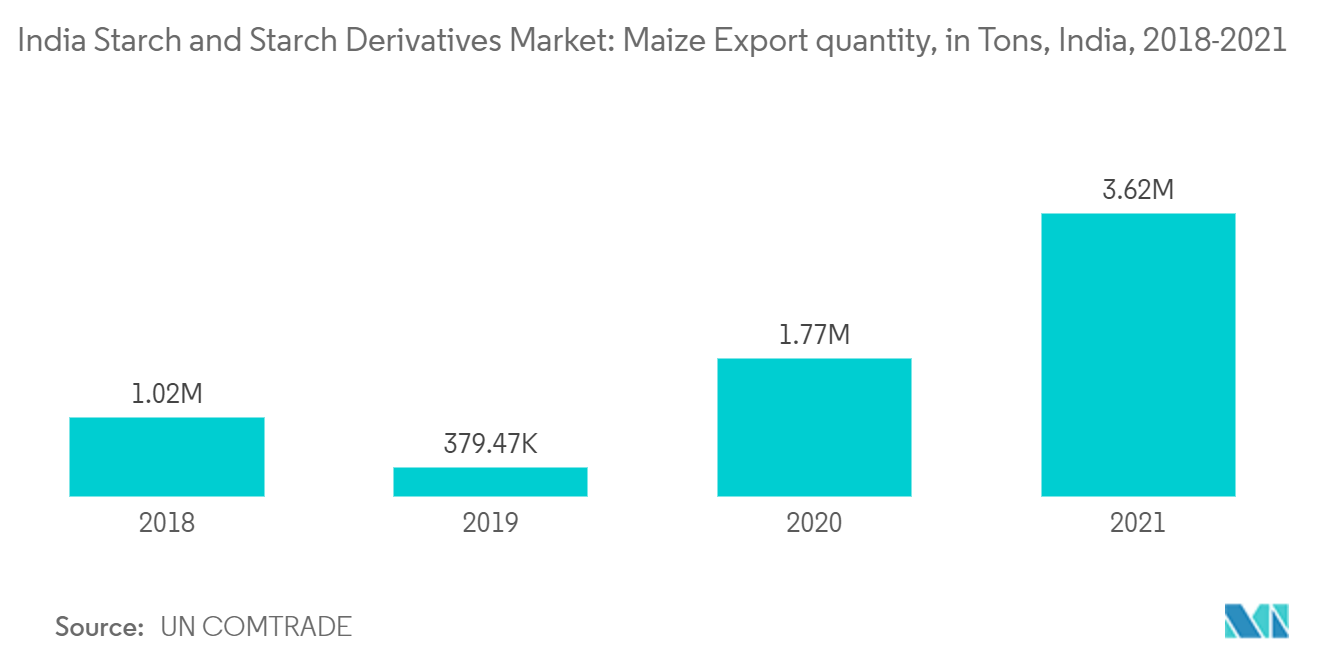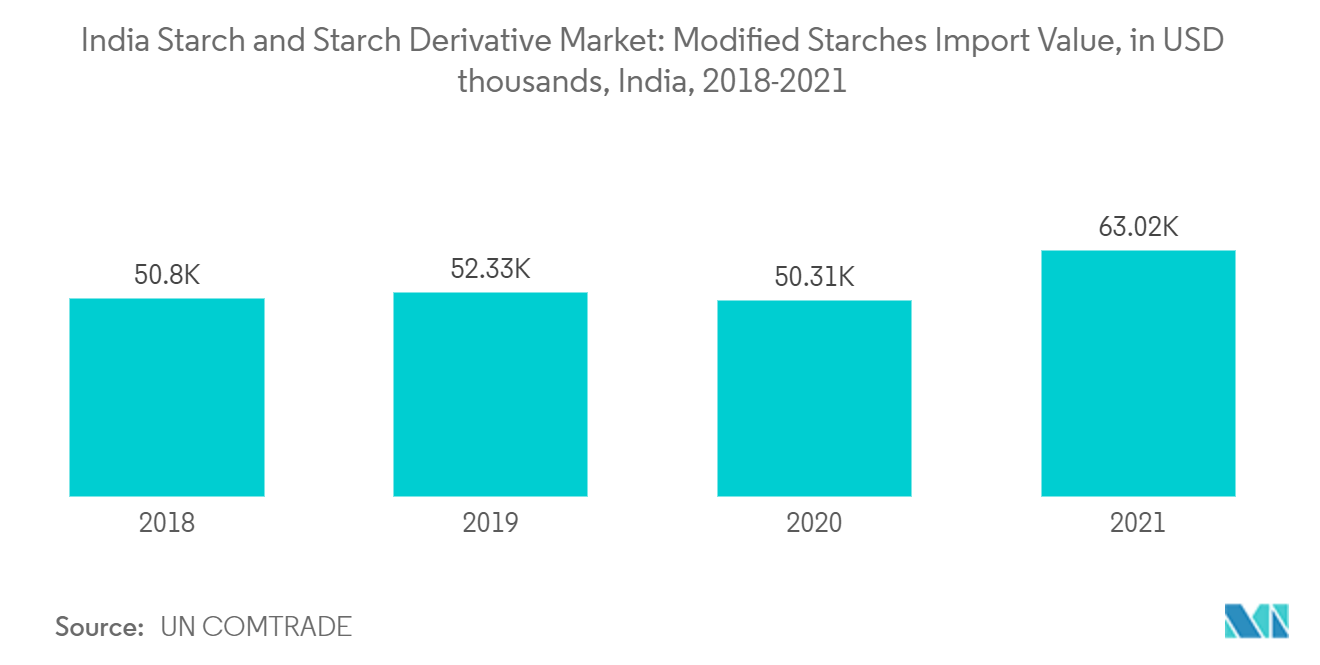Market Trends of India Starch and Starch Derivative Industry
Presence of Raw Materials In Abundance
- The agricultural cultivation of plants with a high starch content, such as potatoes, wheat, corn (maize), cassava, and rice, serves as the primary supply of raw materials for the synthesis of starch. The type of raw material will depend on the potential of agricultural production in the production locations. For instance, although rice and cassava are frequently used in Asia, Maize is frequently utilized in the Americas.
- The starch molecule can be extracted from the listed raw materials and marketed in that form (referred to as "native starch"), but it can also go through one or more chemical or physical changes to enhance its properties and broaden the scope of its applications. Both native and modified starches are used in the production of literally thousands of supermarket staples. Starches are commonly used in the production of instant and ready-to-eat foods presently, allowing them to preserve the right textural properties while freezing, thawing, and heating.
- Cereals are almost entirely used as the raw material for the manufacturing of starch. For instance, according to articles on starch published by Federal Research Centre for Nutrition and Food, Detmold, Germany, it states that more than 80% of the world's starch markets are supplied by corn (maize). Wheat produces less starch (>8%) than other crops. By-product credits play a large role in the economics of these crops' processing, which is conventional.
- In addition to the substrates already listed, other raw materials include cassava and potato tubers. Further raw materials include rice, sweet potatoes, barley, oats, and sago, which are all listed under the category "others." The major raw material for the Indian starch and starch derivative market is maize. Other raw materials used are potato and tapioca, but the volume of starch production using these raw materials is small compared to that from maize.
- For example, according to UN COMTRADE 2021, the major importer of maize from India includes countries such as Bangladesh, Vietnam, Nepal, Malaysia, and Myanmar. At the same time, the major exporters of maize to India include countries such as South Africa, the United States of America, Argentina, Brazil, and France. Therefore, the significant import and export values of maize in India indicate its raw material abundance. Hence, high raw material availability is a major market driver for India's starch and starch derivative market.

Rising Demand For Modified Starch
- The process of improving or reducing starches' beneficial and detrimental properties is known as starch modification. It alters the cooking process, lessens retrogradation, and enhances film creation and adhesion. It aids in improving pastes' potential to gel.
- Fast food restaurants frequently use modified starch to improve their food's flavor, taste, and texture, which will drive product demand during the projection period. The modified starches segment has witnessed the highest growth in India's starch and starch derivatives market. This is primarily due to the rising demand for low-calorie food products owing to the rising number of obese and diabetic people and growing awareness toward health.
- The major sources for the modified starch industry are corn, potato, wheat, cassava, and tapioca. Corn is the dominant source of modified starch, while tapioca is the growing source of raw material for the industry. Also, growing consumer demand for clean-label products and functional foods across the country has triggered market growth.
- Numerous industrial uses exist for corn starch, which is versatile and simple to modify. Its uses include anti-sticking agents and adhesives in the papermaking sector. Additionally, it is employed in the manufacture of textiles, sugar, and corn syrup. The addition of modified starches, which are great flavor transporters, can enhance ready-to-drink mixtures. It slightly increases viscosity for a silky smoothness in coffee, slushies, smoothies, and other beverages. It improves the quality of such baking items when added to pasta, soup, and mayonnaise. In many different sectors, especially those that use flavored oils, it is also highly helpful for emulsifying final products.
- Due to its many advantages, modified starch is employed in a variety of industries, including food, papermaking, cosmetics, personal care, and textiles. Modified starch is a versatile ingredient used in the personal care and cosmetics industries. As the demand for natural cosmetics has increased over the past few years and is anticipated to continue to expand over the coming years, manufacturers are creating new cosmetic products employing organic ingredients such as modified starch.
- For instance, in June 2022, the StarDesign brand consisted of various starch product ranges under Cargill Beauty. The company has operations and distribution networks in India. Its product offerings comprise waxy corn-based thickeners, emulsifiers, and sensory enhancers obtained sustainably from Maize.

